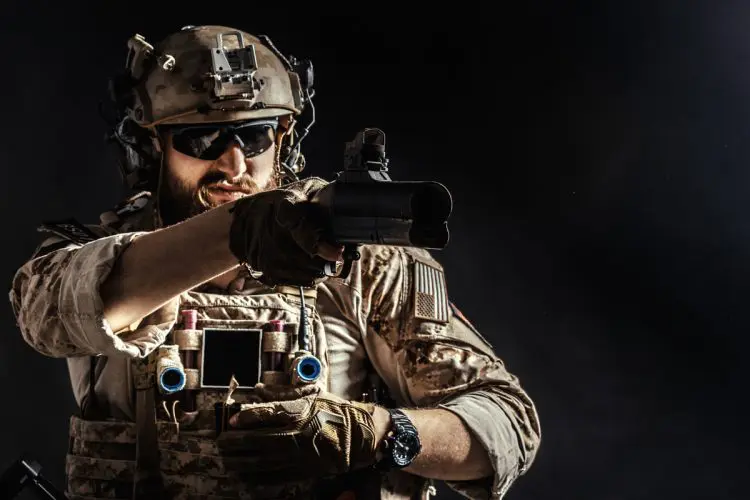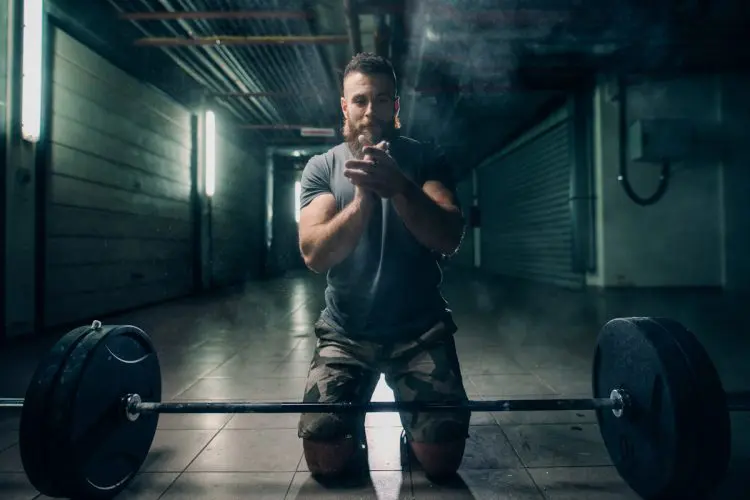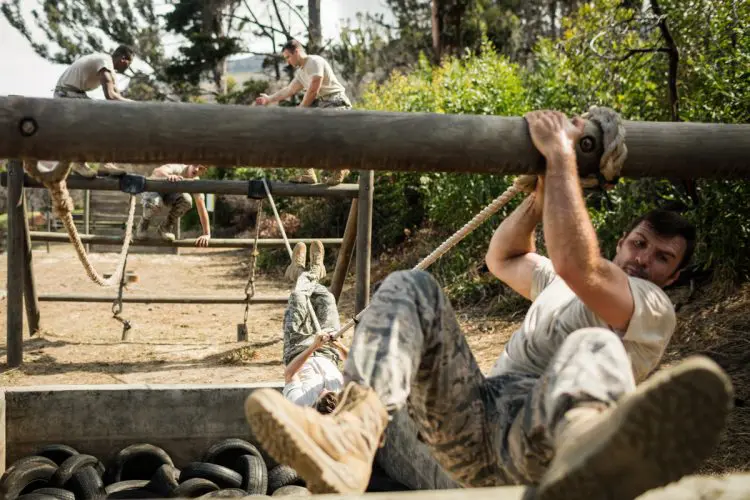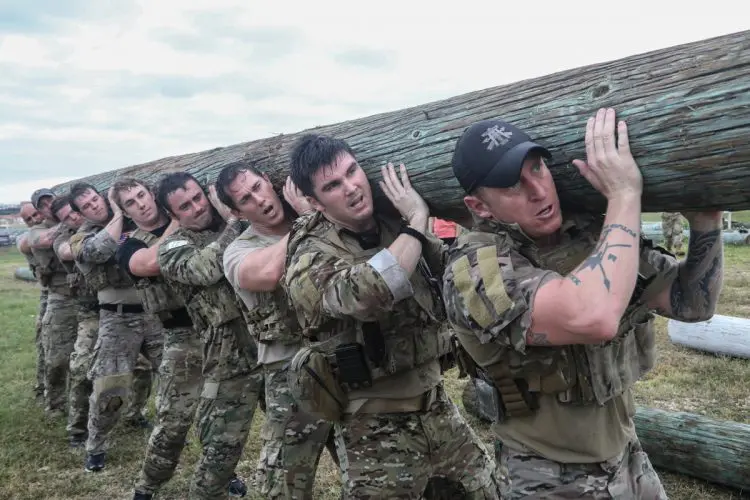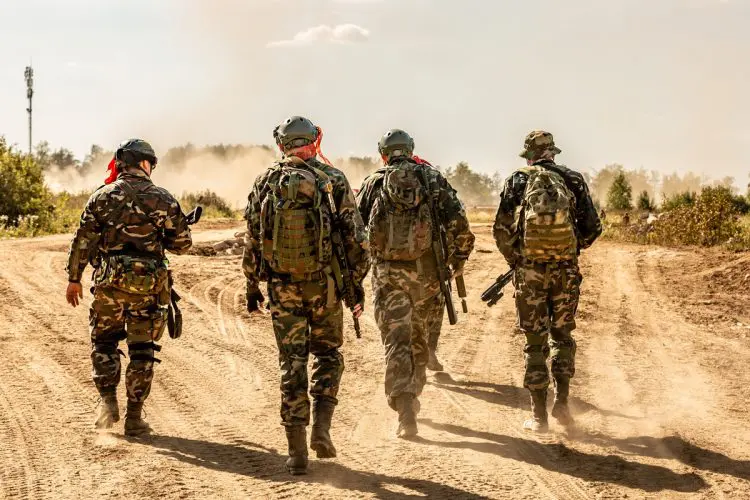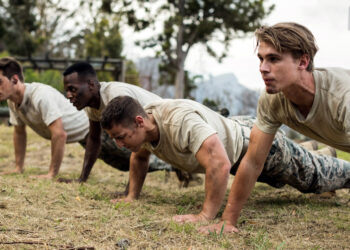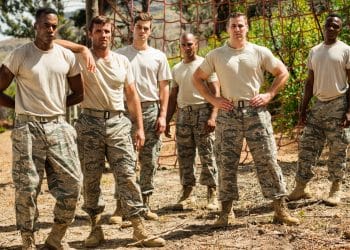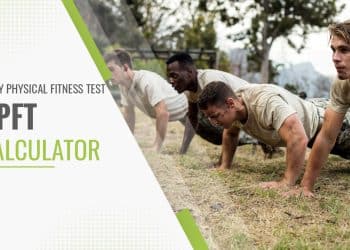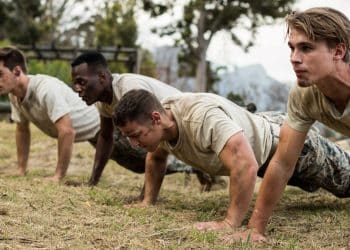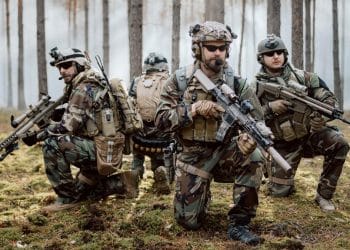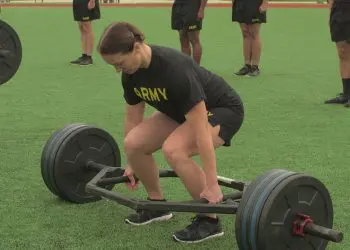There probably haven’t been too many occasions where your fitness and strength were all that separated you from life and death. But, for members of the armed forces, and especially the special forces, that’s often the reality of their daily existence.
Members of the armed forces, particularly those in a frontline combat role, don’t just need a high level of fitness. They also need to be able to operate under tremendous levels of physical and emotional stress, often while severely sleep-deprived or under-nourished.
But what does it mean to be special forces fit? And what types of training can you do so you are fit for almost any conceivable challenge? Let’s discuss!
Cardiovascular Fitness
Cardiovascular fitness is a cornerstone of military and special forces training. Modern warfare IS often highly mechanized, and while soldiers are frequently transported by armored personnel carriers, airplanes, Humvees, helicopters, and landing craft, once they’re on the ground, they’re on foot.
Insertions behind enemy lines and other covert operations can mean walking or running many miles, often under the cover of darkness and while carrying lots of equipment.
If an operation goes sideways, soldiers can find themselves with no other option but to travel on foot to safety. Transports can fail to show up on time or simply not be available for extraction. Helicopters are often grounded because of bad weather. When that happens, walking out is often the only remaining option.
Level Up Your Fitness: Join our 💪 strong community in Fitness Volt Newsletter. Get daily inspiration, expert-backed workouts, nutrition tips, the latest in strength sports, and the support you need to reach your goals. Subscribe for free!
Even just body armor, weapon, and ammunition will weigh in at 35lbs or more. Add food, first aid equipment, comms equipment, and specialist gear for the specific environment, and pack weight can easily exceed 100lbs.
Imagine walking for days or even weeks with 100lbs on your back. And not just on flat terrain but over natural and manmade obstacles and while remaining alert and tactically aware at all times.
Needless to say, this will be a whole lot tougher than a 45-minute treadmill run or a Zumba class!
So, how do you develop the cardiovascular fitness of a special forces soldier? As patrolling invariably means being on your feet, running and rucking are your best exercises choices. Rucking means walking long distances while carrying a weighted backpack. For civilian training purposes, a weighted vest works well too.
While military personnel often have to run with added weight, this is not recommended because the extra impact can cause injuries. Instead, run without weight and save your load carrying for your rucking workouts.
With both running and rucking, start off easy and increase the distance and duration gradually. In terms of rucking weight, even carrying 20lbs can be challenging if you’ve never done it before, so start light and build up slowly.
For both running and rucking, try to do as much as you can off-road rather than on tarmac or concrete, and definitely try to avoid treadmills if you can. Not only are off-road trails easier on your joints, but the uneven terrain will also help improve your balance and stability.
Muscular Strength
Hollywood often depicts special forces soldiers as massively muscular. However, the truth is that big muscles aren’t all that helpful in a combat environment. For a start, the bigger and heavier you are, the more bodyweight you’ll have to carry when you run or ruck. Also, the more muscle you’ve got, the more food you’ll need to eat, and that is often in very short supply.
While there are exceptions to this rule, most special forces operatives are lean and athletic rather than bodybuilder or powerlifter big. But, these soldiers still need to be strong.
Strength is a valuable trait in military life. Equipment is often heavy, and you’ll need to be strong enough to lift, carry, and use it properly. Simply getting on and off a transport while carrying all your kit is a test of strength.
A helicopter insertion may sound like an easy way to go to work but, and while carrying lots of heavy kit, you may be required to climb down and then back up a long rope, so the chopper doesn’t need to touch down in hostile places. Climbing a 30-foot rope against a helicopter downdraft while carrying 50lbs of gear is a real test of upper body strength, bravery, and skill, and climbing back up is no picnic either!
The best way to build this kind of functional strength is to lift heavy weights for low reps while focusing on compound exercises that mimic the challenges you are likely to face in the field. Good exercise choices include:
Special forces operatives also do a lot of core training. This ISN’T because they want a six-pack! Instead, a strong core is essential because it helps stabilize your midsection, taking stress of the lumbar spine in the process. This is important when rucking.
There are lots of great core exercises to choose from, but two of the best are shovel lifts and Turkish get-ups.
Why these two lifts in particular, and not the more usual crunches and sit-ups? The main reason is that these exercises involve multiple joint movements at the same time, and also use your arms and legs. This is how your core muscles tend to work in nature and especially in military life.
Because you’ll need to find time to train for lots of different types of fitness, one of the best ways to train for special forces strength is by using abbreviated programs that consist of just 2-4 exercises.
Using just 2-3 workouts per week, lasting 30-40 minutes each, you should have no problem developing the strength needed to cope with the demands of military life. The reverse pyramid training method would be a good option, as it’s especially time efficient.
For example:
| Monday | Wednesday | Friday |
| Deadlifts | Squats | Power cleans |
| Bench press | Pull-ups | Overhead press |
| Pendlay rows | Turkish get-ups | Chin-ups |
Muscular Endurance
Where muscular strength is your ability to generate lots of force, endurance is your ability to generate force for long periods of time. It’s the difference between a one-rep bench press with a massive weight and pumping out a whole lot of push-ups.
Level Up Your Fitness: Join our 💪 strong community in Fitness Volt Newsletter. Get daily inspiration, expert-backed workouts, nutrition tips, the latest in strength sports, and the support you need to reach your goals. Subscribe for free!
Special forces soldiers need strength AND endurance.
One of the best ways to develop muscular endurance is with high rep, light weight training combined with short rest periods between sets. In the military, this often means bodyweight circuit training.
For example:
- Push-ups x 20
- Lunges x 20
- Crunches x 20
- Pull-ups x 10
- Squat jumps x 15
- Planks x 45 seconds
- Dips x 10
- Step-ups x 10 per leg
- Flutter kicks x 30
- Burpees x 10
Storm through these 10 exercises as fast as you can. Rest 1-2 minutes and then repeat 2-4 more times. As well as developing your muscular endurance, this type of workout will also help improve cardiovascular fitness.
Anaerobic Fitness
Rucking and running long distances tests and develops your aerobic fitness. However, combat is not a steady-paced activity, and, at any moment, a soldier on patrol may suddenly have to react to a threat, making the switch from heavy-footed carthorse to sprinting at top speed or, in fitness terms, jumping from aerobic to anaerobic exercise.
This means special forces soldiers need the cardiovascular fitness of a long-distance runner AND the anaerobic fitness of a sprinter.
Developing this aspect of your fitness means doing things like interval training, complexes, hill sprints, circuit training, and CrossFit type workouts. The aim of these workouts is to push you way outside your comfort zone, provide you with just enough rest to catch your breath, and then do it all over again.
To make this type of training even more realistic, try doing some intervals or an intense circuit workout immediately after a run or ruck. This will simulate the demands that face special forces soldiers.
Agility, Balance, And Coordination
Many special forces operations, especially working in an urban environment, require good agility, balance, and coordination. It’s all well and good to be fit, fast, and strong in a straight line, but you’ll also need to jump, duck, dodge, crawl, roll, and dive in all directions, often while carrying 35lbs or more of essential kit.
To develop these fitness components, most branches of the military use obstacle courses. Courses vary from service to service, but the basic aim is the same: they force you to move over a range of challenging apparatus, many of which are high above the ground, and usually while carrying kit.
To the uninitiated, all of that swinging on ropes, climbing cargo nets, crawling through tunnels, running along logs, and jumping over walls looks like a lot of fun, but the reality is it’s a supremely challenging workout. It’s basically parkour while wearing a heavy backpack!
Obstacle courses are also designed to develop confidence for working at heights, and most are done against the clock, adding an extra element of pressure.
This type of training may be hard to replicate in the civilian world, but getting out of the gym and playing a pick-up game of basketball or touch football or doing some basic tumbles like forward and backward rolls will help develop your agility, balance, and coordination.
Mental Toughness
It doesn’t matter how fit or strong you are; the ability to keep going despite fatigue, lack of sleep, hunger, discomfort, and even fear is usually more mental than physical. Call it grit, backbone, determination, or willpower; ultimately, your mental toughness is what matters most.
Weaker, less fit individuals, can often outperform and outlast fitter compatriots simply because they are better at blocking out the voices that are telling them to stop.
Some people are naturally more mentally tough than others, but this kind of resilience and determination can also be trained.
A few ways to improve your own mental toughness include:
- Train outside in all weathers
- Work out when you are sleep-deprived or hungry
- Train every day for 30 days straight
- Do “challenge workouts” that push you well beyond your comfort level – like rucking 20 miles while carrying 50lbs of kit
- Work out with someone you know is much fitter or stronger than you are, and try to match them
Needless to say, there is an element of risk with some of these training ideas, so you should exercise common sense as well as your body. But, it’s only by exceeding your current levels of performance that you forge new levels. The idea is to get more comfortable being very uncomfortable. This is what builds mental toughness.
Special Forces Fitness Program
Combining all these aspects of training is not easy. After all, there are lots of types of workouts to include. In many ways, it would be more effective NOT to create a program because life in the special forces is so unpredictable. Subsequently, randomly chosen workouts would replicate military life more accurately.
However, too much randomness won’t help you develop a high level of fitness. Instead, you need more structure and progression.
This is just an example of what you could do to get special forces fit.
| Days | Workout |
| Monday | Run followed by muscular endurance circuit or complexes |
| Tuesday | Strength training – e.g., squats, bench press, rows |
| Wednesday | Easy jog followed by hill sprint intervals |
| Thursday | Run followed by muscular endurance circuit or complexes |
| Friday | Strength training – e.g., deadlift, overhead press, pull-ups |
| Saturday | Rucking |
| Sunday | Rest |
How to Get Special Forces Fit – Wrapping Up
Special forces operatives are the ultimate fitness all-rounders. They’re strong, have tremendous endurance, are agile, and are mentally tough too. Not everyone has what it takes to be a SEAL or a Ranger, but that doesn’t mean you can’t develop the fitness that means you’ll be ready for almost any physical challenge that comes your way.
There is NOTHING wrong with being a fitness specialist and focusing exclusively on bodybuilding, powerlifting, running, etc. However, there is a lot to be said for being more of an all-rounder. If nothing else, it means that your workouts will never be boring or repetitive!

